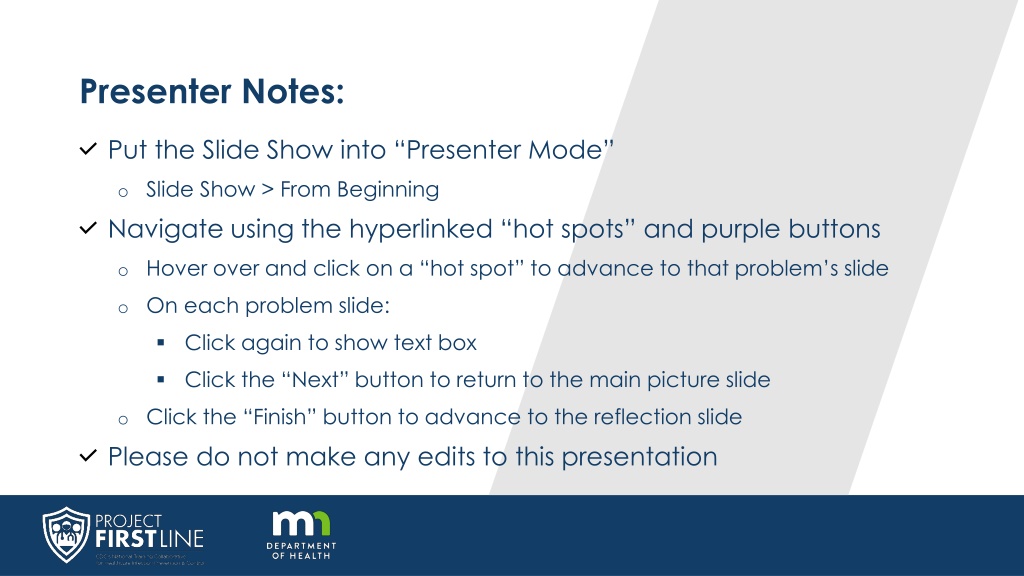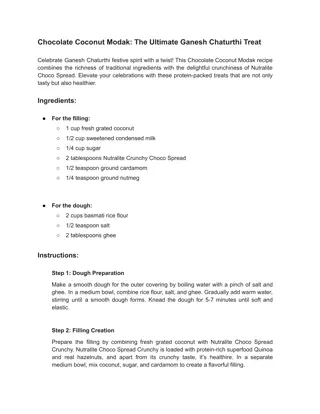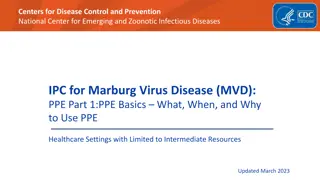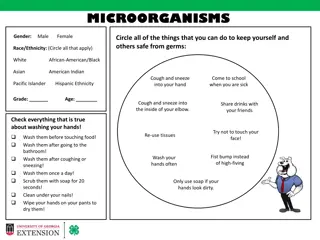Reducing Germ Spread in Healthcare Environments
Health care workers must be vigilant in identifying and addressing potential sources of germ transmission to prevent infections. This presentation highlights common problems in a nurses' station that can lead to the spread of germs and provides practical solutions. Topics covered include shared lotion tubs, food storage in nurses' stations, and proper glove usage between patients or tasks.
Download Presentation

Please find below an Image/Link to download the presentation.
The content on the website is provided AS IS for your information and personal use only. It may not be sold, licensed, or shared on other websites without obtaining consent from the author.If you encounter any issues during the download, it is possible that the publisher has removed the file from their server.
You are allowed to download the files provided on this website for personal or commercial use, subject to the condition that they are used lawfully. All files are the property of their respective owners.
The content on the website is provided AS IS for your information and personal use only. It may not be sold, licensed, or shared on other websites without obtaining consent from the author.
E N D
Presentation Transcript
Presenter Notes: Put the Slide Show into Presenter Mode o Slide Show > From Beginning Navigate using the hyperlinked hot spots and purple buttons o Hover over and click on a hot spot to advance to that problem s slide o On each problem slide: Click again to show text box Click the Next button to return to the main picture slide o Click the Finish button to advance to the reflection slide Please do not make any edits to this presentation Interactive Resources| What s Wrong with this Picture: Nurses Station 1
Table Talk with MDH Project Firstline Interactive Resources What s Wrong with this Picture: Nurses Station
Welcome Agenda Welcome and Introductions What s Wrong with this Picture: Nurses Station Conclusion Introduction to Reservoirs: Where Germs Live | Session 1: Body Reservoirs Interactive Resources| What s Wrong with this Picture: Nurses Station 3
Whats Wrong with this Picture: Nurses Station Interactive Resources| What s Wrong with this Picture: Nurses Station 4
Whats wrong with this picture? Health care workers need to be extra aware of where germs are found and how they can be spread to surfaces and people. We can help stop infections when we recognize the risk for germs to spread! In this image of a nurses station, select four problems that need to be fixed to reduce the spread of germs. Finish
Using a Shared Tub of Lotion Next Tubs of lotion can pick up bacteria from hands. Those bacteria can then grow and multiply in the wet lotion and spread to others' hands every time the lotion is used.
Having Food in the Nurses Station Next Food in the nurses station can get blood or body fluids on it. Also, food spilled on dry surfaces can become a place for germs to grow.
Wearing Gloves Between Patients or Tasks Next Gloves can spread germs to people and things just like dirty hands can. The same pair of gloves should not be worn for more than one patient or task, and they should be removed and thrown away after they are used.
Health Care Working Handling a Syringe Next To reduce the risk of germ spread, certain tasks should not be conducted in public spaces such as hallways and nurses stations. Medications and vaccines should be prepared in clean, designated spaces - not at the nurses station.
Reflection You did it! Thanks for exploring this common health care setting and identifying infection control problems. Have you ever encountered them in your workplace? If so, why do you think they are so common? What could we do to stop them? Introduction to Reservoirs: Where Germs Live | Session 1: Body Reservoirs Interactive Resources| What s Wrong with this Picture: Nurses Station 10
Conclusion Interactive Resources| What s Wrong with this Picture: Nurses Station 11
Resources MDH Project Firstline wwww.health.mn.gov/projectfirstline CDC PFL Interactive Resources CDC Interactive Resources: What s Wrong with This Picture? Nurses Station Subscribe to MDH Project Firstline Mailing List Minnesota Department of Health (@mnhealth)| Facebook CDC Project Firstline (cdc.gov) | Facebook | Twitter Minnesota Department of Health (@mnhealth)| Twitter Subscribe to CDC Project Firstline e-mails Minnesota Department of Health (@mnhealth) | LinkedIn Minnesota Department of Health (@mnhealth)| Instagram Interactive Resources| What s Wrong with this Picture: Nurses Station 12
Questions Introduction to Reservoirs: Where Germs Live | Session 1: Body Reservoirs Interactive Resources| What s Wrong with this Picture: Nurses Station 13























